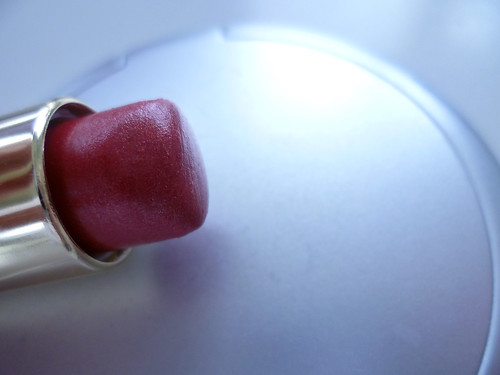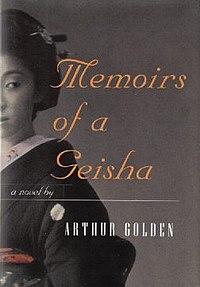Much of the eastern world is still shrouded by a curtain of mystery. It's a world steeped in traditions and culture that only one born to it can hope to understand. It's a world that an American named Arthur Golden revealed in his 1997 book Memoirs of a Geisha. Hidden inside this tale of tradition and uncontrollable circumstance, there's a really beautiful love story.
The Book
The reader meets young Chiyo Saramoto at the beginning of the book. She lives in a poor family, in a poor fishing village near the Sea of Japan. Along with her older sister Satsu, she's sold to an okiya in the large city of Kyoto. The okiya she's sold to is located in Gion, the best-known geisha district in the city. Chiyo is taken into the okiya; Satsu is not. She is taken away to parts unknown instead, and Chiyo is left alone at age 9.
There is a girl her age, nicknamed Pumpkin, already living there. In the okiya, Chiyo is surrounded by Granny, an old woman who complains about everything; Mother, who cares more about money than anything else; and Auntie, a failed geisha. The beautiful and bad-tempered geisha Hatsumomo also lives in the okiya, and she hates Chiyo upon first sight.
Chiyo doesn't care. She's not going to stay in the okiya anyway. She makes plans to leave the okiya, the district and all of Kyoto with Satsu, who has been forced into prostitution in the pleasure district. Chiyo ends up falling off the roof and breaking her arm in the escape attempt instead, an act which enrages Mother. Chiyo's geisha training is immediately halted. She will live in okiya and work as a slave instead, until she works off the debt she's created.
Years pass as Chiyo works in the okiya. Pumpkin continues with her geisha training, and Hatsumomo continues behaving badly. Chiyo is unhappy, and overworked, and completely without hope...until she has a chance encounter on the street one day. A kind and handsome man, the Chairman, gives her a handkerchief and some money. She gives the money back in prayer at the Yasaka Shrine. Her prayer?
To be a geisha, so she may one day see the Chairman again. While she gives the money to the shrine, Chiyo keeps the handkerchief for herself. She develops envy and resentment for Pumpkin, who is still training to be a geisha under Hatsumomo. But during Granny's funeral, Chiyo is taken in by Hatsumomo's rival Mameha. She owns a kimono that Chiyo destroyed years ago under Hatsumomo's direction. Mameha talks Mother into paying for Chiyo's training again, and soon she, too, is learning to be a geisha.
This is when the little girl known as Chiyo dies. Born in her place is Sayuri the geisha. Hatsumomo is popular, but technically she is not a good geisha because she made the mistress of her tea house angry once, long ago. Because of this, Hatsumomo could never find a sponsor (a danna) to become independent. This is why Hatsumomo still lives in Mother's okiya. Mother does not name Hatsumomo as her successor because she knows it would be the ruination of the okiya.
Hatsumomo's hatred of Sayuri is still strong, and she does her best to ruin the young geisha's reputation all around Gion. Mameha must come up with a new plan, and get Hatsumomo out of the way. She begins finding bidders for Sayuri's mizuage, an event which is portrayed in the book as a sort of deflowering ceremony. Nobu Toshikazu is among those Mameha wants Sayuri to entice. He's a prominent businessman and the president of an electric company...not to mention, a friend of the Chairman's. At last Sayuri sees him again, but cannot talk to him because she must try to woo Nobu. Another man, whom Sayuri calls Dr. Crab, is also interested in Sayuri. It is he who wins the bidding war for the mizuage. Sayuri uses this money to pay back all her debt.
This is when Mother chooses to adopt Sayuri as her successor, though she'd been considering Pumpkin before. It ruins all remaining friendship between the two girls, and angers Hatsumomo. She becomes even more shrewish than usual, and is eventually thrown out of the okiya. Pumpkin voluntarily leaves shortly after that.
None of it will matter soon, for Japan will soon be involved in World War II. Many of the geishas are being evacuated, and Nobu manages to get Sayuri to the north. Here, she works for a kimono maker while the war rages. After the war ends, Nobu finds her again and asks her to return to Gion. Here, he wants her to entertain Deputy Minister Sato, a man who can help re-build the electric company. Both the Chairman and Nobu are involved with the company, and she will do anything to help the Chairman.
Together with Pumpkin and Mameha, Sayuri entertains the men regularly. Nobu begins proceedings to become Sayuri's danna. It is the worst of all fates. If Nobu becomes her danna, she will be near the Chairman...but never to have him, only to be tortured by his nearness. She forms her own plan to sleep with the Minister, and subsequently get caught by Nobu. This will lower her reputation in his eyes so badly, he would never want to be her danna. Pumpkin is tasked with bringing Nobu to the right place and time.
She doesn't realize how very much Pumpkin still hates her. Instead, Pumpkin makes sure it is the Chairman, not Nobu, who catches Sayuri with the Minister. Eventually, Sayuri ends up in New York running her own tea house...but not before she resolves things with the Chairman.
The Film
There is a girl her age, nicknamed Pumpkin, already living there. In the okiya, Chiyo is surrounded by Granny, an old woman who complains about everything; Mother, who cares more about money than anything else; and Auntie, a failed geisha. The beautiful and bad-tempered geisha Hatsumomo also lives in the okiya, and she hates Chiyo upon first sight.
Chiyo doesn't care. She's not going to stay in the okiya anyway. She makes plans to leave the okiya, the district and all of Kyoto with Satsu, who has been forced into prostitution in the pleasure district. Chiyo ends up falling off the roof and breaking her arm in the escape attempt instead, an act which enrages Mother. Chiyo's geisha training is immediately halted. She will live in okiya and work as a slave instead, until she works off the debt she's created.
Years pass as Chiyo works in the okiya. Pumpkin continues with her geisha training, and Hatsumomo continues behaving badly. Chiyo is unhappy, and overworked, and completely without hope...until she has a chance encounter on the street one day. A kind and handsome man, the Chairman, gives her a handkerchief and some money. She gives the money back in prayer at the Yasaka Shrine. Her prayer?
To be a geisha, so she may one day see the Chairman again. While she gives the money to the shrine, Chiyo keeps the handkerchief for herself. She develops envy and resentment for Pumpkin, who is still training to be a geisha under Hatsumomo. But during Granny's funeral, Chiyo is taken in by Hatsumomo's rival Mameha. She owns a kimono that Chiyo destroyed years ago under Hatsumomo's direction. Mameha talks Mother into paying for Chiyo's training again, and soon she, too, is learning to be a geisha.
This is when the little girl known as Chiyo dies. Born in her place is Sayuri the geisha. Hatsumomo is popular, but technically she is not a good geisha because she made the mistress of her tea house angry once, long ago. Because of this, Hatsumomo could never find a sponsor (a danna) to become independent. This is why Hatsumomo still lives in Mother's okiya. Mother does not name Hatsumomo as her successor because she knows it would be the ruination of the okiya.
Hatsumomo's hatred of Sayuri is still strong, and she does her best to ruin the young geisha's reputation all around Gion. Mameha must come up with a new plan, and get Hatsumomo out of the way. She begins finding bidders for Sayuri's mizuage, an event which is portrayed in the book as a sort of deflowering ceremony. Nobu Toshikazu is among those Mameha wants Sayuri to entice. He's a prominent businessman and the president of an electric company...not to mention, a friend of the Chairman's. At last Sayuri sees him again, but cannot talk to him because she must try to woo Nobu. Another man, whom Sayuri calls Dr. Crab, is also interested in Sayuri. It is he who wins the bidding war for the mizuage. Sayuri uses this money to pay back all her debt.
This is when Mother chooses to adopt Sayuri as her successor, though she'd been considering Pumpkin before. It ruins all remaining friendship between the two girls, and angers Hatsumomo. She becomes even more shrewish than usual, and is eventually thrown out of the okiya. Pumpkin voluntarily leaves shortly after that.
None of it will matter soon, for Japan will soon be involved in World War II. Many of the geishas are being evacuated, and Nobu manages to get Sayuri to the north. Here, she works for a kimono maker while the war rages. After the war ends, Nobu finds her again and asks her to return to Gion. Here, he wants her to entertain Deputy Minister Sato, a man who can help re-build the electric company. Both the Chairman and Nobu are involved with the company, and she will do anything to help the Chairman.
Together with Pumpkin and Mameha, Sayuri entertains the men regularly. Nobu begins proceedings to become Sayuri's danna. It is the worst of all fates. If Nobu becomes her danna, she will be near the Chairman...but never to have him, only to be tortured by his nearness. She forms her own plan to sleep with the Minister, and subsequently get caught by Nobu. This will lower her reputation in his eyes so badly, he would never want to be her danna. Pumpkin is tasked with bringing Nobu to the right place and time.
She doesn't realize how very much Pumpkin still hates her. Instead, Pumpkin makes sure it is the Chairman, not Nobu, who catches Sayuri with the Minister. Eventually, Sayuri ends up in New York running her own tea house...but not before she resolves things with the Chairman.
The Film
A feature-length film was created in 2005 based on the book. Zhang Ziyi, a Chinese actress, stars as Sayuri. This caused considerable controversy, since Sayuri is a Japanese girl. However, the movie is a very faithful adaptation, copying the plot of the novel almost exactly.
There are some slight differences an exaggerations, mostly done for dramatic effect. On film, Hatsumomo leaves the okiya much more dramatically by setting it on fire before fleeing. Much of the backstory of the novel, revolving around young Chiyo's life, is cut from film -- probably, this is done for time's sake. The book is very long, and so is the movie. Her geisha training is also shortened on film, and shown in less detail.
The movie also adds a little story of its own, giving Hatsumomo a secret lover whom she's not allowed to have as a geisha. We see a love-stricken and trapped Hatsumomo on film, not the hell-on-wheels witch from the novel. The book delves deeply into geisha tradition and their hidden world, heady stuff, while the movie swims briefly along the shallow end.
That said, it's a beautiful story in both mediums. It's filled with mystery, drama, tradition, love and emotion. Read the book, watch the movie, and compare them for yourself.













0 comments:
Post a Comment